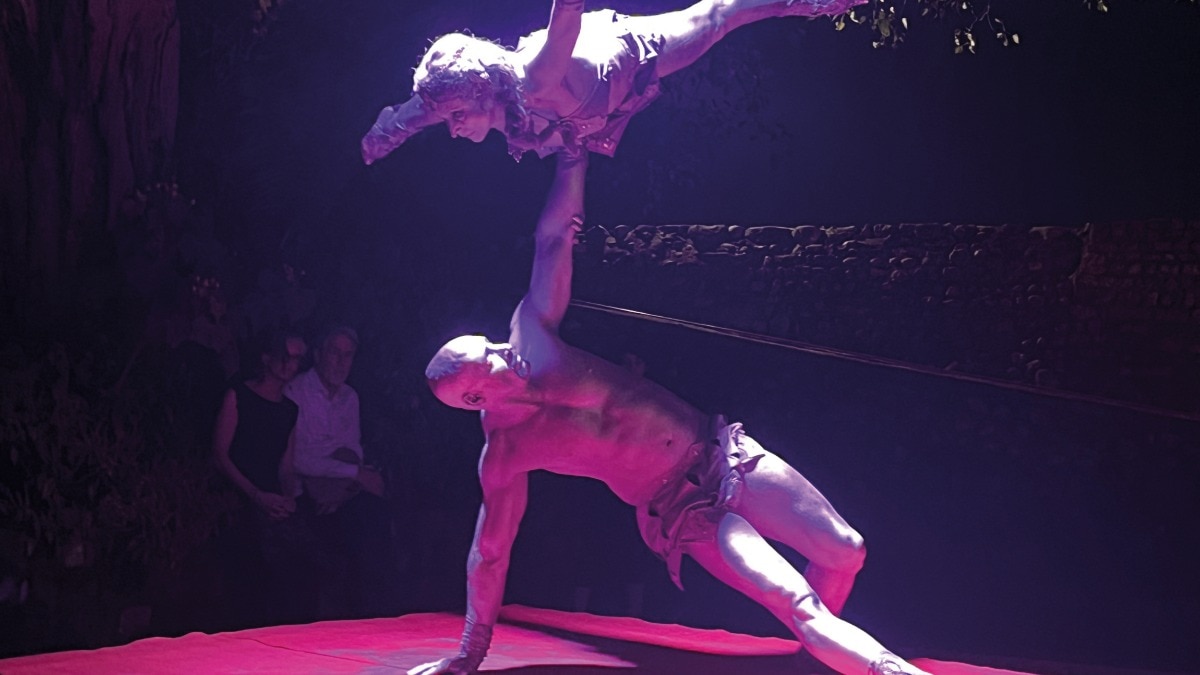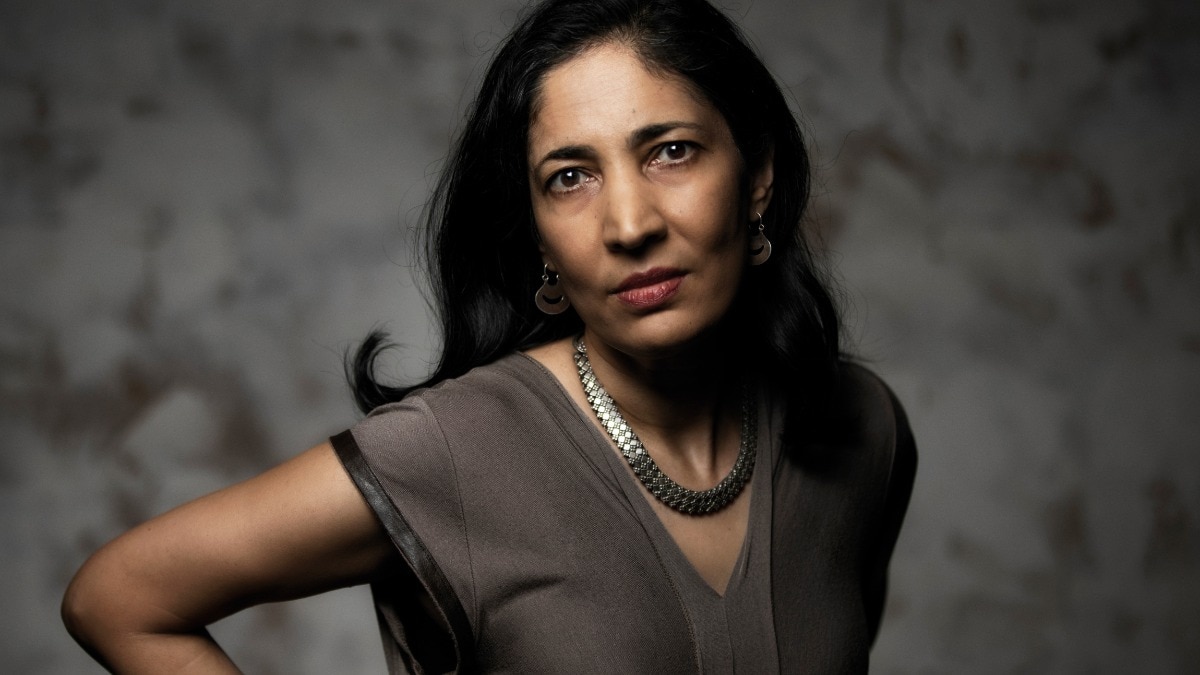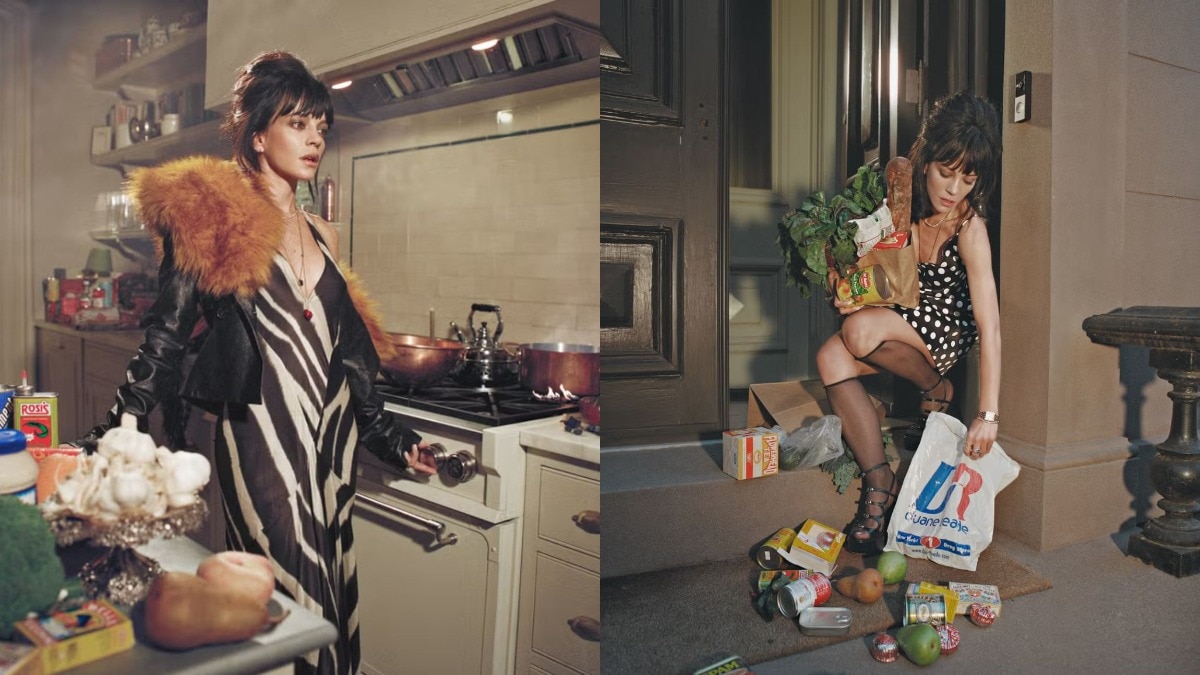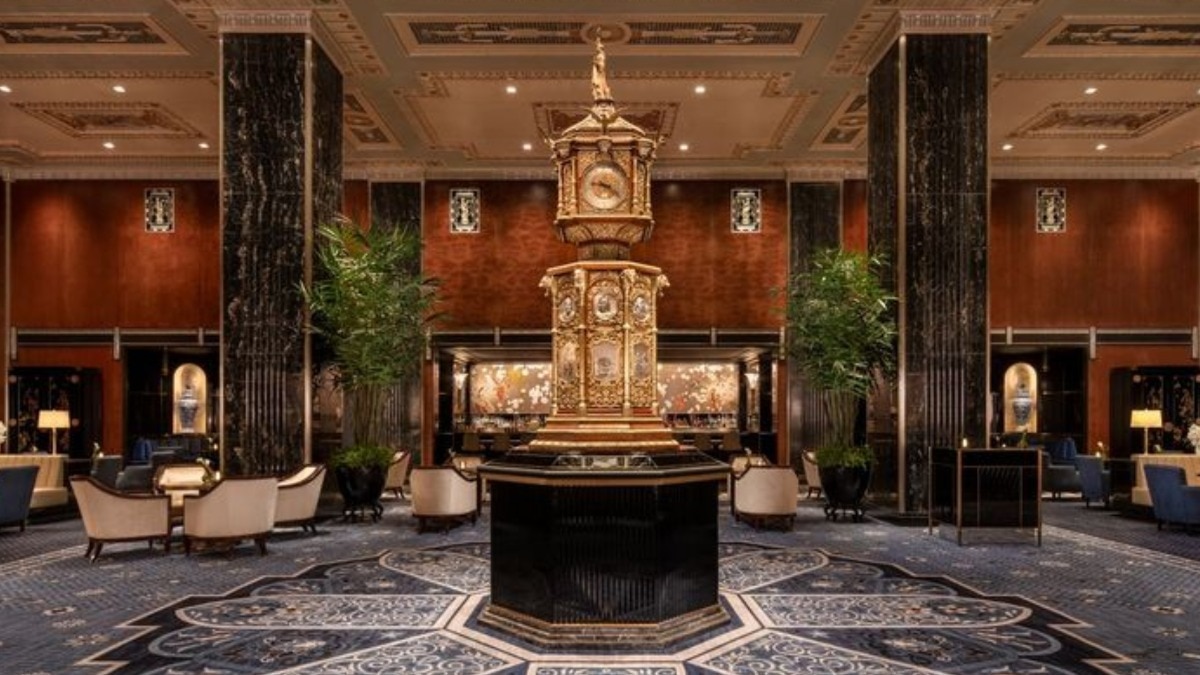
12 Indian artists who will steal the spotlight at the ongoing Venice Art Biennale
Artists like MF Husain, Paresh Maity, and Sonal Ambani among others have found place in the landmark 60th edition of the art festival.

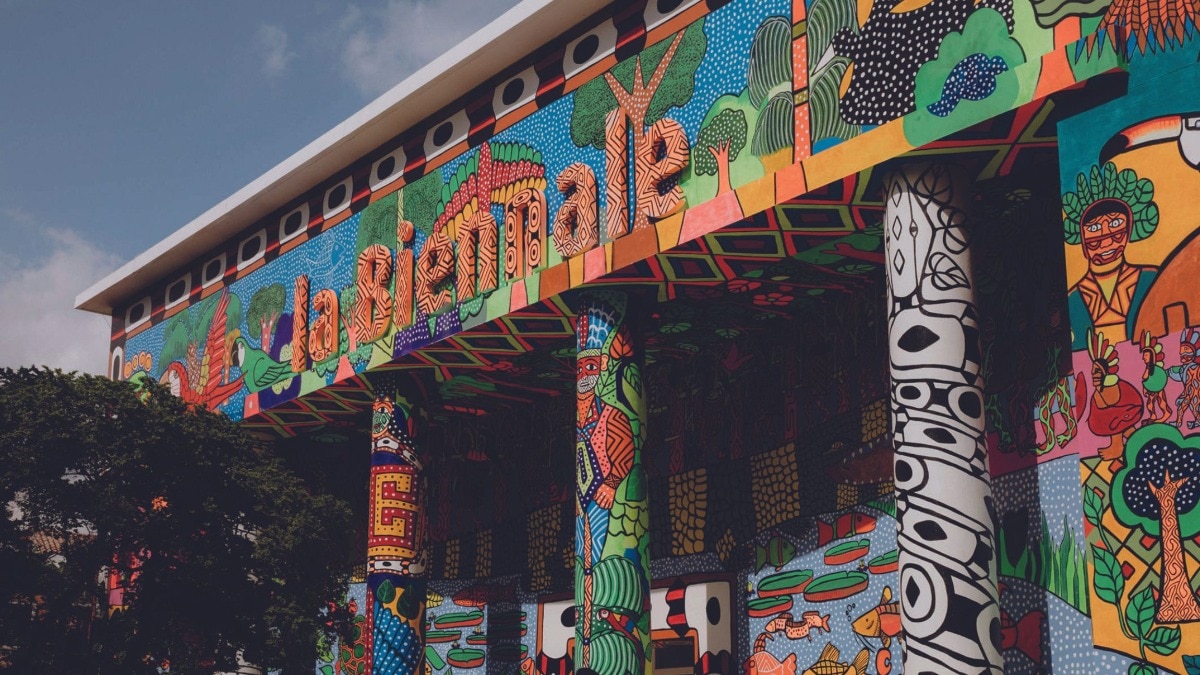
For the landmark 60th edition, La Biennale di Venezia, aka the Venice Art Biennale, explores the theme of ‘foreignness’ through various approaches, fostering dialogue and exchange. Titled Stranieri Ovunque—Foreigners Everywhere, it is curated by Adriano Pedrosa, the first South American, openly queer curator in the history of the Biennale Arte. “Wherever you go and wherever you are, you will always encounter foreigners—they, we, are everywhere,” Pedrosa explains. “No matter where you find yourself, you are always truly, and deep down inside, a foreigner.” His show, spread across the Giardini and Arsenale venues, highlights art from historically marginalised communities, with a strong representation of the Global South.
The curator’s presentation, Historical Nucleus, located in Giardini della Biennale houses the artworks of India’s master modernists—pioneering abstractionists Ram Kumar and SH Raza, the iconoclastic Bombay progressive FN Souza, surrealist Bhupen Khakhar, primitivist modernist Jamini Roy, prolific painters Amrita Sher-Gil and B Prabha. The contemporary section spotlights the work of the Bengaluru-based, women-led art collective, Aravani Art Project, which features a mural composed of cis and transgender women embodying the idea of inclusivity, acceptance, and identity. The Biennale represents a culmination of decades of artistic excellence with the ability to blend traditional techniques with modern sensibilities, seamlessly.
Although India once again lacks a pavilion at the La Biennale di Venezia, the international exhibition includes 12 Indian artists—a record, and quadruple the amount that showed at the previous Biennale. Over the years, Indian representation at the Venice Biennale has been multifarious, marked by a diverse array of talent. From prolific artists such as Paresh Maity and Sonal Ambani to legacy creators like Manu and Madhvi Parekh, and renowned patrons like Kiran Nadar—Indian artists have left an indelible mark on the Biennale’s storied history.
Explore the cosmic garden
Head to the Salone Verde—Art & Social Club to walk through the Collateral Event of the 60th La Biennale di Venezia curated by Maria Alicata and Paola Ugolini. Cosmic Garden brings together a stunning range of works by two of India’s national award-winning senior contemporary artists, Manu and Madhvi Parekh, along with the evolution of their practice into a collectively created third interdisciplinary medium—hand embroidery. The collection is presented through the crafted works of master textile artists of the Chanakya School of Craft and its creative director Karishma Swali. “Being selected for the 60th International Art Exhibition is a profound honour, acknowledging the significance of Indian hand embroidery on a global stage. The intersection of art and craft in Cosmic Garden showcases embroidery as both a meditative art form, and a social and artistic practice, bridging the traditional and contemporary realms,” Swali shares.
According to her, Cosmic Garden “encapsulates the spiritual and cultural dialogue portrayed in the artwork, emphasising the dynamic potential of Indian hand embroidery as an art form.” This carefully curated series of works embraces a multidisciplinary approach, and seeks to re-evaluate the mutual relationship between women and handcraft techniques, transcending the confines of domesticity by bringing hand embroidery into the public sphere. Working with husband-wife duo Manu and Madhvi Parekh “has been enriching”, says Swali. “Madhvi Parekh’s artwork, rooted in village life and fantasy, is interpreted using primitivist expression and traditional embroidery techniques. In contrast, Manu Parekh’s modern abstractions inspire us to explore chants through the thread, capturing his paintings’ vibrancy and cultural depth.” These interdisciplinary works go beyond conventional boundaries to conjure an artistic language firmly rooted in communal cultural histories. “This union celebrates diverse cultural energies, offering a unique perspective rooted in contemporary expression. Our exhibition symbolises a space where traditional crafts meet modern art, fostering a deeper appreciation for our shared human experience,” she concludes.
Into the archives with the rooted nomad
India’s creative excellence at the Biennale pays homage to one of the most famous modernist painters dubbed “India’s Picasso”, in a show at the Magazzini del Sale in Dorsoduro, presented by Kiran Nadar Museum of Art. “One of the driving missions of the Kiran Nadar Museum of Art is to raise awareness about Indian and South Asian artists around the world and to make art accessible to diverse audiences. This first-time 360-degree immersive experience created around an Indian artist who was known as a people’s painter will be a prime attraction, unveiling the artist’s dream and desires through moving images and soundscapes. It is a labour of love for India’s most compelling modernist, who I admired greatly and with whom I enjoyed a long friendship,” says KNMA chairperson and founder Kiran Nadar.
The Rooted Nomad: M.F. Husain

Curated by KNMA director and chief curator Roobina Karode, the part-exhibition and part-immersive experience titled, The Rooted Nomad, reaffirms MF Husain’s enduring impact on the art scene. “The exhibition blends intimate viewing and kaleidoscopic relay, highlighting Husain’s artistic journey, prolific works, and interdisciplinary approach to art. The immersive component, creatively crafted by Visioni Eccentriche, draws on nearly 160 works from the KNMA collection, seamlessly integrating motion graphics, live action, choreography, and sound design,” shares Karode. The chosen title juxtaposes contrasting ideas to reflect Husain’s complex artistic persona and captures his contribution to modern art, drawing from mythologies, art traditions, and literature. “This aligns with the Venice Biennale’s theme that explores diaspora, migration, displacement, and exile, paying tribute to the pioneering artist’s legacy and India’s cultural richness as a rooted nomad in the world of art.”
Genesis by Paresh Maity
Another section of the main exhibition, Nucleo Storico, features creative speculations on modernism. India’s prolific painter Paresh Maity’s bronze sculpture, Genesis, presented by Delhi-based Art Alive Gallery at the Marinaressa Gardens is also part of Personal Structures—a biennial contemporary art exhibition organised by the European Cultural Centre. “I envisioned Genesis as the origin of the universe, the inception of the world, and its evolution, with the main conceptual framework rooted in the idea of a united world with societal balance at its core. I created the geometric form to visualise the different energies that constitute the world, and then introduced the pendulum—a metaphor for universal balance stemming from the perception of unity and harmony,” shares Maity.

With Genesis, Paresh Maity aims to explore the concepts of life and balance in an ever-evolving world, proposing that different energies come together in harmony, where all boundaries and limitations diminish, allowing the world to become a united space for growth. Maity adds, “This year’s Biennale theme explores the multiplicity of identities and beliefs. With globalisation at its peak, people are migrating more, resulting in displaced identities and potential disparities in societal balance. Genesis, conceptualised and rooted in the idea of balance, captures that very essence through the metaphor of the pendulum.”
Slings & Arrows of Outrageous Fortune by Sonal Ambani

A bull riddled with crimson arrows brings sculptor Sonal Ambani’s bold statement on gender pay gap to the Venice Biennale. Part of the Personal Structures exhibition, the artist’s installation, titled Slings & Arrows of Outrageous Fortune, delves into the broader implications of patriarchy and male hegemony in social spheres. “Inspired by Claudia Goldin’s Nobel Prize-winning work on income inequality, the piece features a powerful stainless steel bull adorned with major world currencies. As the bull charges towards a circular target, it symbolises patriarchal structures that valorize male dominance. Red arrows piercing the bull represent relentless efforts to challenge these systemic biases, while the target signifies the unified goal of achieving gender equality,” explains Ambani.
The theme of this year’s La Biennale di Venezia revolves around societal issues and fosters a deeper understanding of collective experiences, focusing on the interconnected nature of identity. Slings & Arrows of Outrageous Fortune captures this essence by addressing the pervasive issue of gender inequality. “The sculpture invites viewers to reflect on their role in perpetuating or challenging these norms, presenting a universally resonant issue through powerful symbolism and evocative imagery. It is a privilege to be a cultural ambassador for the diverse artistic heritage of India. This opportunity allows me to bring attention to important socio-economic issues, through the lens of Indian artistry and perspective. While it is a global issue, my voice is one among many, and it is remarkable to be part of the larger discourse,” says Ambani.
A deep dive into Aravani art project’s diaspore (2024)
Indigenous artists seem to be at the heart of Nucleo Contemporaneo—one of the main segments of the Biennale. Especially noteworthy is the work by Aravani Art Project. Their monumental mural, titled Diaspore, presented at the Arsenale Exhibition Pavilion for the Biennale Arte 2024, marks the 10th anniversary of India’s recognition of transgender individuals. The theme of the Biennale resonates deeply with their experiences, as they navigate a world where acceptance of their identities has often made them feel like foreigners in their own bodies and societies.
“Through vibrant colours and multifaceted imagery, our mural explores representations of trans bodies and nature, shedding light on the processes of transition, dysphoria, and acceptance experienced by transgender individuals. The artwork also features portraits of five transwomen from our collective, each depicting their unique journey through gender diaspora, symbolising personal growth. From Shanthi’s peaceful transition symbolised by blooming flowers to Jyothi’s liberation, from emotional cages, each portrait tells a story of resilience and empowerment. Our signature style of colourful and geometric patterns helps convey emotions visually, while symbols like flowers and leaves pay homage to our collective members who couldn’t join us in Venice,” shares Aravani Art Project’s founder and creative director Poornima Sukumar.
Diaspore reflects the artist’s commitment to representing the trans community with pride and authenticity. The backdrop for the work reflects a world rife with multifarious crises concerning the queer rights movement and the existence of people across countries, nations, territories, and borders, highlighting differences and disparities conditioned by identity, nationality, race, gender, sexuality, freedom, and wealth. In this panorama, Sukumar believes, the expression, ‘Foreigners Everywhere’, has several meanings—“it signifies encountering foreigners wherever you go, and the feeling of being a foreigner deep down inside, regardless of your location.”
This piece originally appeared in the June-July 2024 print edition of Harper's Bazaar India.
Lead image credit: Getty Images
Also read: Three artists who are pushing boundaries in the Indian creative landscape
Also read: An art gallery-hopping guide for the Mumbai Gallery Weekend 2023


